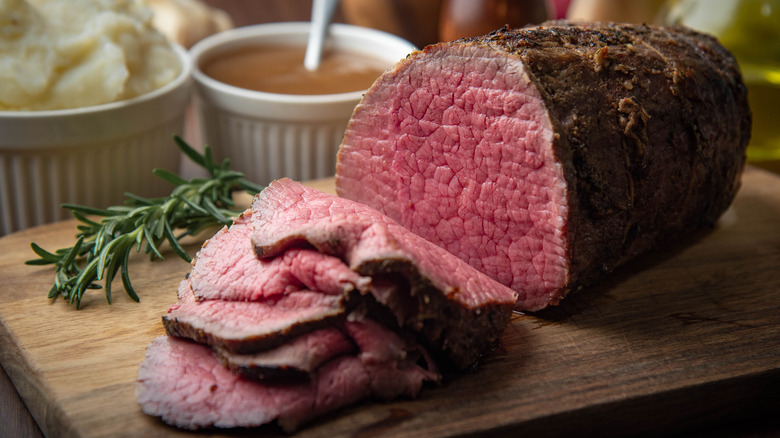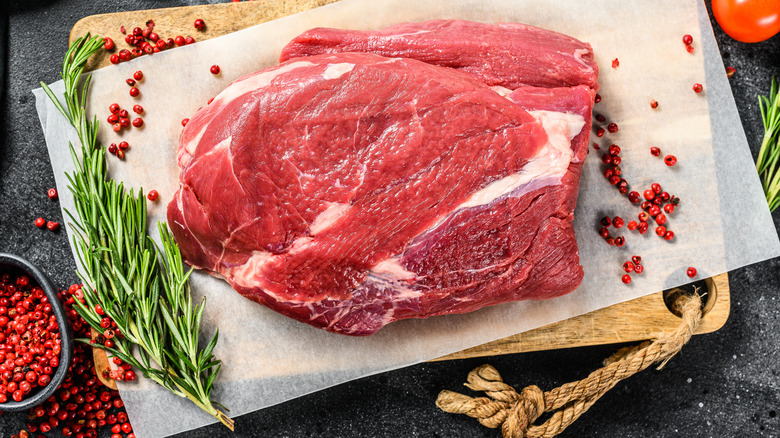What You Need To Consider Before Buying Round Cuts Of Beef
One cow yields many different kinds of beef. The round is one of the eight so-called "primal" cuts — alongside chuck, rib, loin, flank, short plate, brisket, and shank – from the animal. These cuts are then divided into the subprimal (or portion) cuts — like steaks, short ribs, and roasts — that go to the supermarket. The round is located in the cow's hindquarters, below the rump, and above the shank. Generally, meat from this region is inexpensive, lean, and yields various subprimal cuts which require drastically different cooking techniques.
In general, roasts should be cooked slowly, while steak cuts can be hit with higher heat. As such, cuts like rump and eye of round roasts work best when slow-roasted, while tip steaks and top round steaks should be grilled or broiled. The only notable exceptions are bottom and top round steaks, which can be grilled or broiled, but because of their low-fat content, some home cooks might prefer braising them to retain their moisture.
The danger of using a cooking method with the wrong cut of meat is that your beef can end up overcooked and rubbery. So when buying meat from the round, it's a good idea to research how to properly cook the specific cut of the round that you're interested in. Misapplied techniques and cooking methods will lead to unsatisfactory results, while properly-cooked round meat will yield tender and deeply flavorful meat.
High heat or low?
No matter which cut of round you buy, it's going to be lean and therefore prone to drying out because there's no marbling fat to keep the interior moist. With that in mind, there are two steps to follow regardless of the cut — whether it's a round steak or a round roast — you're cooking. The first is to let the cut come up to room temperature to ensure even cooking, especially with a larger cut like a rump or eye of round roast. Take the meat out of the refrigerator for at least an hour before cooking, but don't let it sit out for more than two hours, or you risk contamination, according to the United States Department of Agriculture. Both round roasts and steaks do well with seasonings and marinades to enhance the flavor — a great basic rub is salt, pepper, and garlic powder.
The second tip for cooking round cuts is to hit them hard with high heat to seal in the flavor: the whole time for grilling a tip steak or round steak, but only for fifteen minutes or so for a round roast before turning the oven temperature way down to finish it low and slow. When using either method, your target internal temperature is 145 degrees Fahrenheit. They might not be as flashy (or expensive) as those from the loin, but round cuts still make for an utterly delicious, easily-prepared weekday dinner. All you need to do is know how to cook the cut you buy from this primal region: sustained high heat for the steaks, and extended low heat for the roasts.

